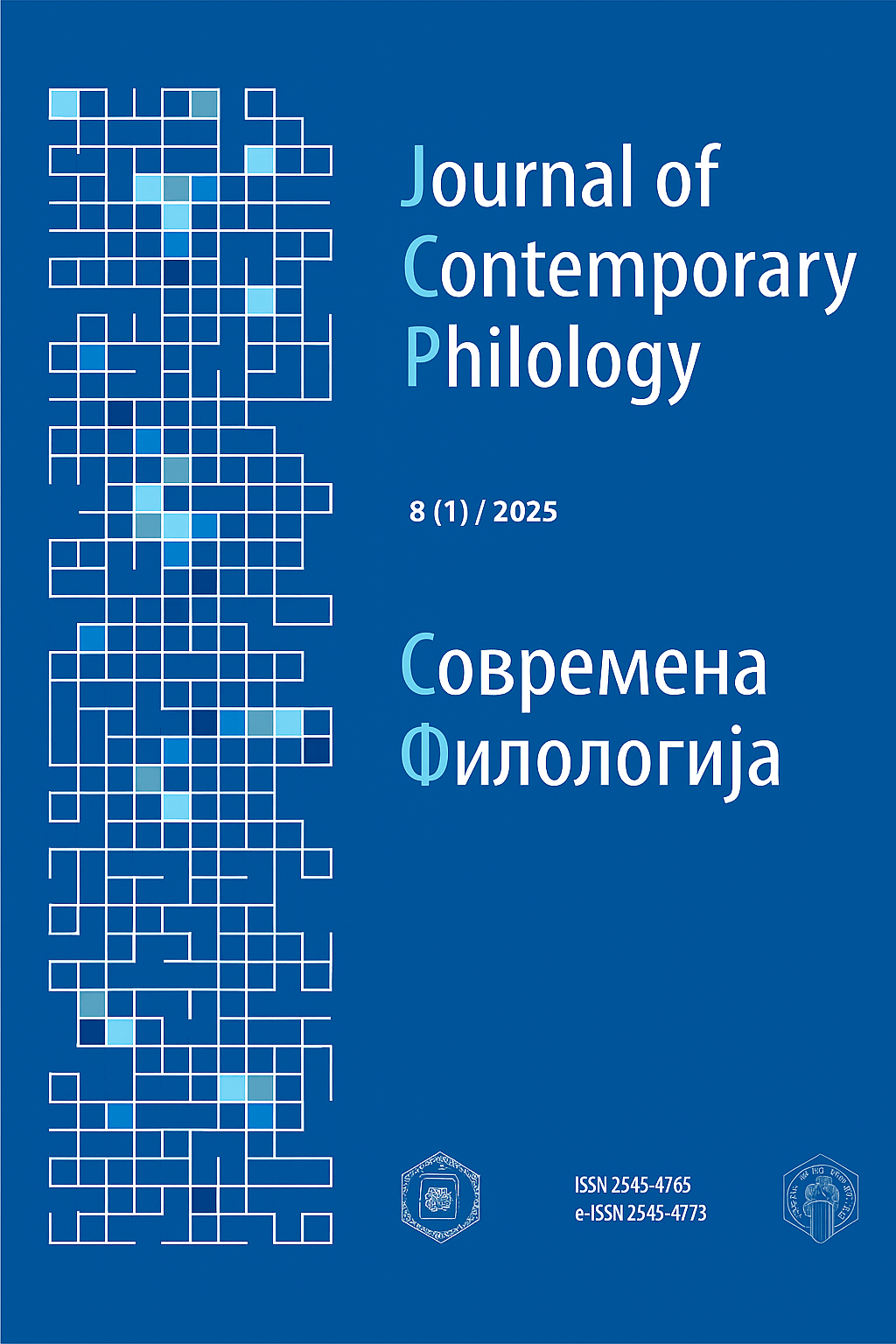LOST IN THE BALKANS: DIFFERENTIAL PLACE MARKING IN THE AROMANIAN VARIETIES
Main Article Content
Abstract
The phenomenon of Differential Place Marking (Haspelmath 2019), also called zero-marking of spatial relations (Stolz et al 2014), has often been mentioned in the languages of the Balkans. Examples of such differential marking have been documented in the Aromanian varieties (Kramer 1981; Caragiu-Marioțeanu 1975), Modern Greek (Holton et al 1997), Macedonian (Koneski 1965), Ancient Greek (Luraghi 2017), and Latin (Haspelmath 2019; Kramer 1981). However, while the presence of Differential Place Marking has been widely acknowledged, detailed descriptions of such patterns in different varieties are still lacking. Our aim is to present and discuss linguistic data from Aromanian and other Balkan Romance varieties (Istroromanian and Meglen Vlach) to better understand the inter- and intra-dialectal variation of Differential Place Marking. We study and compare their occurrences in the linguistic transcripts from different synchronic Aromanian varieties: from Kruševo (Gołąb 1984), Ohrid and Struga (Markoviḱ 2007), and Turia/Kranéa (Bara et al 2005). The results of the comparative analysis suggest that the dialectal and diachronic picture is not uniform. Various semantic factors, such as the type of noun indicating location (proper vs. common) and whether the location is perceived as proximal or distant seem to play a key role.
Downloads
Article Details
Copyright © 2014 Blaže Koneski Faculty of Philology, Skopje
Journal of Contemporary Philology (JCP)
Современа филологија
References
Caragiu-Marioțeanu, M. (1975). Compendiu de dialectologie română:(nord şi sud-dunăreană). Bucureşti: Editura ştiinţifică şi enciclopedică.
Cunia, T. (2010). Dictsiunar a limbaljei armaneasca. Costanța: Editura Cartea Aromana.
Ganenkova, T. (2015). Semanticheskaya struktura predlogov v sovremennom literaturnom
makedonskom yazyke. PhD dissertation. Saint Petersburg University.
Gołąb, Z. (1984). The Arumanian dialect of Kruševo in SR Macedonia, SFR Yugoslavia. Skopje: MANU.
Haspelmath, M. (2010). Comparative concepts and descriptive categories in crosslinguistic studies. Language, 8 (3): 663–687.
Haspelmath, M. (2019). Differential place marking and differential object marking. STUF-Language Typology and Universals, 72 (3): 313–334.
Holton, D., Mackridge, P., and Philippaki-Warburton, I. (1997). Greek: A comprehensive grammar of
the modern language. London: Routledge. ISBN: 978-0-415-10001-4.
Kahl, T. (2007). Hirten in Kontakt: Sprach- und Kulturwandel ehemaliger Wanderhirten (Albanisch,
Aromunisch, Griechisch). Vienna: LIT Verlag. ISBN: 978-3-8258-0944-7.
Koneski, B. (1965). Istorija na makedonskiot jazik. Skopje: Kultura.
Kramer, J. (1981). Griechische Konstruktionen im Aromunischen. In W. Dahmen and J. Kramer (eds.),
Balkan-Archiv 6, 95–105. Hamburg: Helmut Buske.
Kristophson, J. (1974). Das Lexikon Tetraglosson des Daniil Moschopolitis. Zeitschrift
Balkanologie, 10: 11–128. für
Luraghi, S. (2017). Differential goal marking vs. differential source marking in Ancient Greek. In S.
Luraghi, T. Nikitina and C. Zanchi (eds.). Space in diachrony, 119–145. Amsterdam: John
Benjamins.
Markoviḱ, M. (2007). Aromanskiot i makedonskiot govor od ohridsko-struškiot region (vo
balkanski kontekst). Skopje: MANU.
Sandfeld, Kristian. (1930). Linguistique balkanique: problèmes et résultats. Collection linguistique,
31. Paris: Champion.
Saramandu, N. (2014). Atlasul lingvistic al dialectului aromân. Bucharest: Editura Academiei Române.
Stolz, T, Lestrade, S. and Stolz, C. (2014). The crosslinguistics of zero-marking of spatial relations.
Vol. 15. Berlin/Boston: Walter de Gruyter.
Vidoeski, B. (1999). Dijalektite na makedonskiot jazik. Vol. 1. Skopje: MANU.
Wilkinson, M., Dumontier, M., Aalsberg, I., Appleton, G., Axton, M., Baak, A., Bloomberg, N., Boiten, J.-W., da Silva Santos, L., Bourne, P. (2016). The FAIR Guiding Principles for scientific data management and stewardship”. Scientific data, 3: 31-

